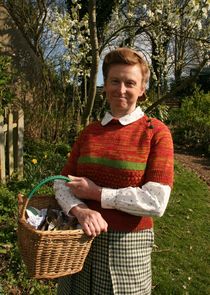Gregg Wallace explores the Nottinghamshire factory that produces 250,000 jars of curry sauce each day. Gregg is making a supersized 3,000-kilo batch of tikka masala - enough to feed 25,000 people. He loads in almost half a tonne of yoghurt and cream and ten other ingredients, including 30 kilos - or 10,000 cloves - of garlic. He deploys an unusual kitchen implement - a hosepipe - to get his ingredients into the cooking pot and heats it for 30 minutes. Then he checks it for colour against a decorating colour chart. Finally his jars head into a pasteuriser for a second two-hour cooking session.
Meanwhile, Cherry Healey is in Guntur, the chilli capital of India, where they sell 3,500 tonnes of chilli each day. She helps to harvest the chillies on a typical small-scale farm, dries and packs them down then follows them through processing into chilli powder. Cherry also gets the lowdown on cooking rice with four foolproof rules which ensure it comes out right every time, and learns how to beat the burn if you have overdone it in the curry house. It turns out that milk is the right choice because the fat dissolves the capsaicin that is responsible for that burning sensation.
Historian Ruth Goodman finds that our passion for curry is around 370 years older than the supposed invention of tikka masala in a Glaswegian restaurant in the 1970s. She recreates a 1747 recipe for rabbit curry, and learns that the word 'curry' itself is a misunderstanding of the Tamil word 'kari'. And she re-examines the early convenience curries of the 1970s and talks to the British Asian housewife whose curry crusade helped to make high street curries closer to Indian home cooking.







No comments yet. Be the first!